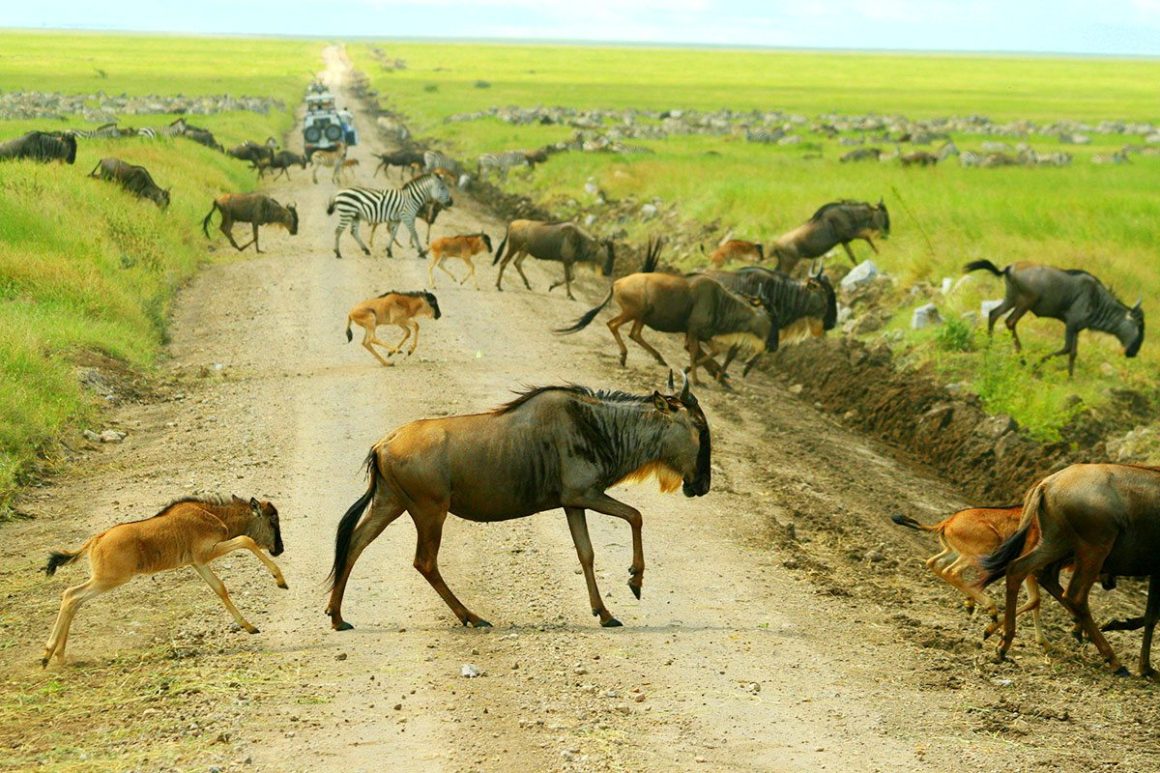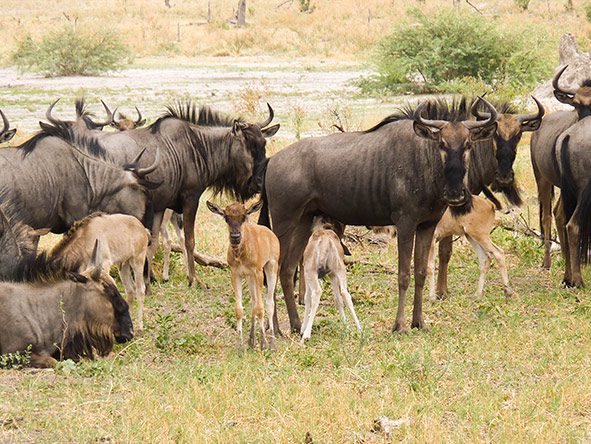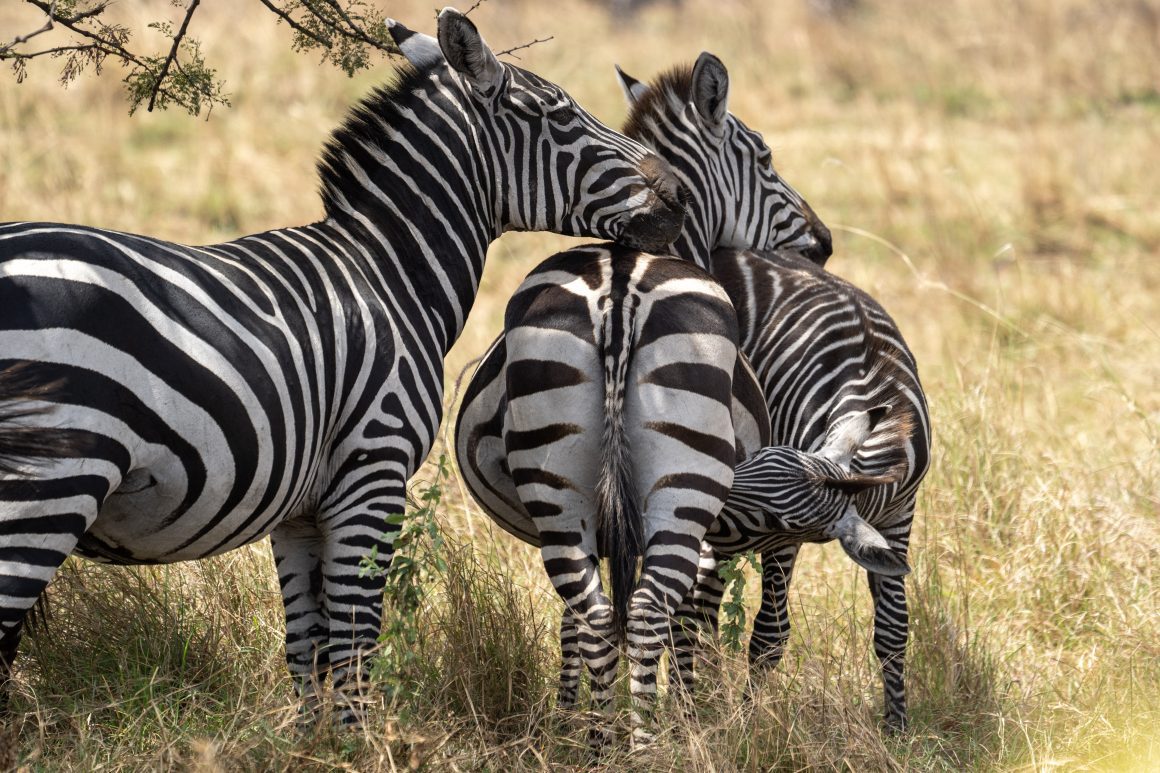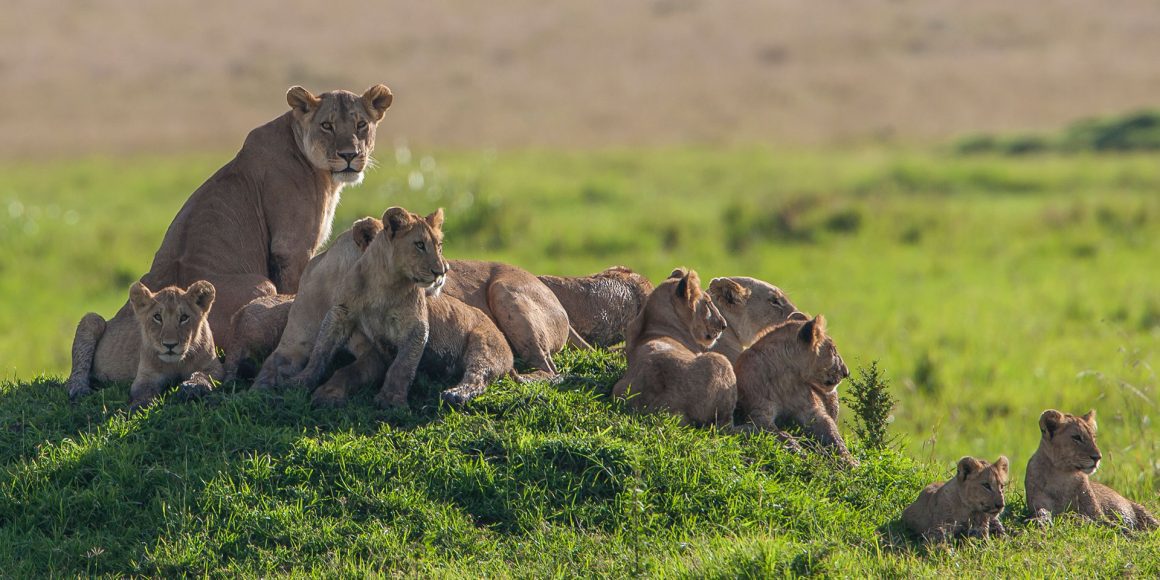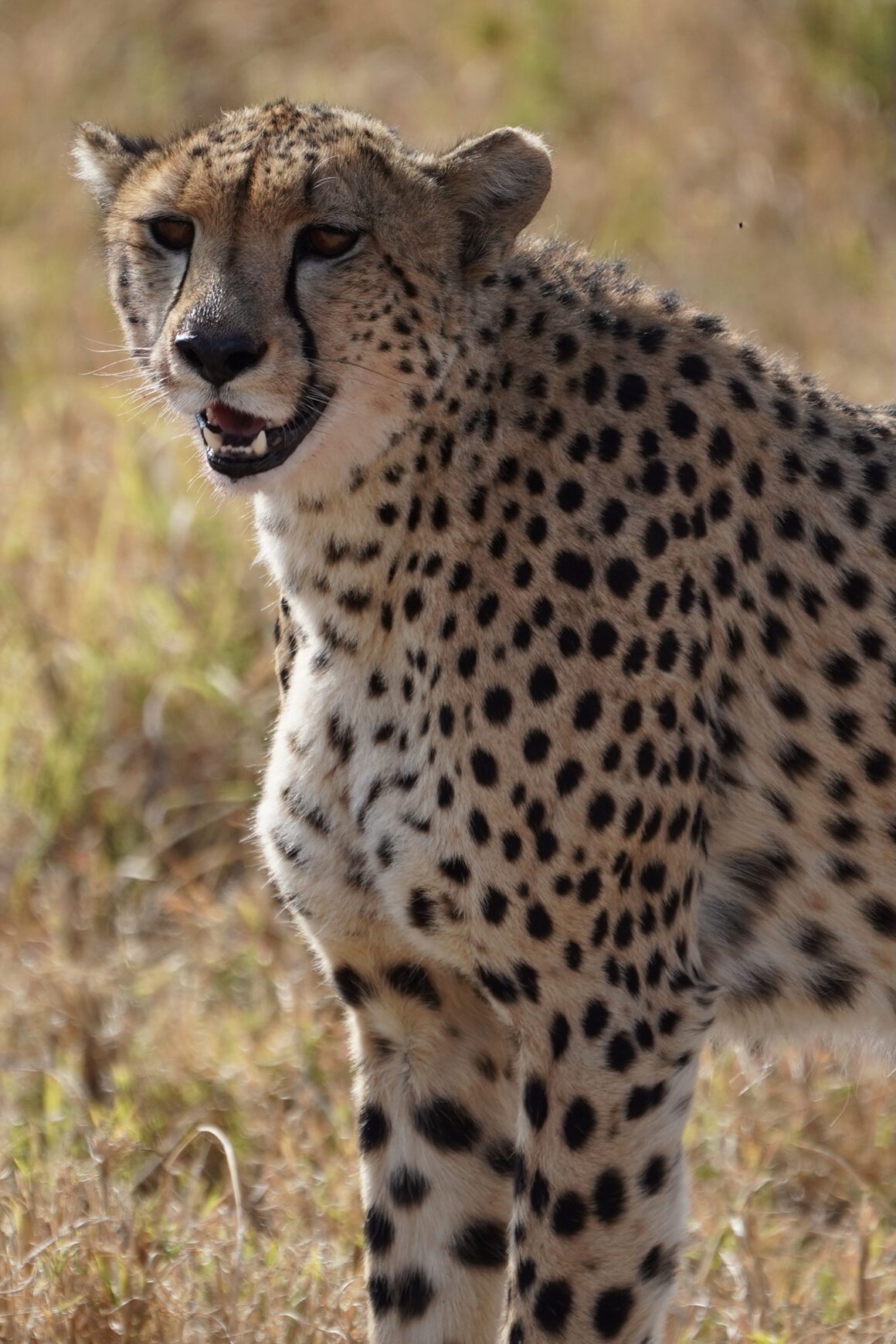The Great Wildebeest Calving Migration Safari has been designed specifically to focus on following the Great Serengeti Wildebeest migration during calving from December to April. The areas to be covered are Lake Ndutu area, as well as the Southern and Central areas of Serengeti National Park where the majority of the wildebeest are usually found. A visit to the world famous Ngorongoro Crater is part of this safari as well.
Detailed tour Itinerary for the wildebeest calving migration safari
Day 1: Arrival at Kilimanjaro Airport to start your Wildebeest calving migration safari
Upon arrival, our safari representative will highly be available to welcome and cheer you up as you transfer from Kilimanjaro International Airport to your hotel in Arusha. Our staff will answer all your queries regarding your upcoming safari and provide you with a short briefing as well. Get enough rest to overcome the jet lag at your accommodation so that you be fresh for the Wildebeest calving migration safari the next day. Overnight at Arusha Planet Hotel / Pazuri Inn
Day 2: Transfer to Explore Tarangire national park
With a lazy breakfast, your guide will pick you up and proceed to Tarangire National park one of the largest national park in Tanzania located in Manyara region, this place is characterized by the large herds of elephants, tree climbing lions, and the fascinating baobab trees also called the Tree of Life for its almost mythical powers that some cultures attach to it. This park is especially known for Tarangire River which flows all year round and the only source of water for wild animals during dry seasons. Overnight at Tarangire Simba Camp
Day 3. Transfer to explore Serengeti National Park – Seronera area
After breakfast, you will continue towards the fertile highlands where wheat and corn are grown by the Iraq people. Along the way we’ll pass through the mist-shrouded rainforests of the Ngorongoro Conservation Area where you might be lucky enough to see baboons, or even leopards and elephants in the dense undergrowth. Passing through the Ngorongoro Conservation Area, you will be able to see the breath-taking Ngorongoro Crater before traveling onwards to the Serengeti National Park, which you will reach by midday. The Serengeti National Park is the largest park in Tanzania with diverse landscapes and habitats, such as grassy plains, swamps, lakes, savannah and mountains. After an extensive game drive, you will drive to your accommodation where you will enjoy dinner and an overnight stay. Overnight at Into Wild Africa tented Camp
Day 4. More Adventure Serengeti National Park – Wildebeest calving migration safari
This entire day is set aside for game drives upon the central Serengeti. The Serengeti, the habitat of an abundance of wildlife such as impala, buffalo, crocodile, and hippo, is more well-known for its great migrating herds of zebra, antelope, and wildebeest. The animals’ trek is determined by the rainfall and varies from year to year. In November and December, the animals move from the northern region, dominated by woodlands and hills, to the grassy plains of the south. During the longer rainy season from April to June they return to the north. Apart from the migrating herds, we may have the opportunity to see the resident predators, leopard, cheetah, and lion, fulfilling their role in the circle of life.
After an extensive game drive, we head for our tented lodge for a hearty dinner and another night by the fire of relaxation and conversation under the sweeping majesty of the star bright African night out upon the ‘Endless Plain’. Overnight at Into Wild Africa tented Camp
Day 5. Explore South Serengeti (Ndutu wildebeest Migration calving)
After breakfast, we will head to the Lake Ndutu region, situated in the Ngorongoro Conservation Area, a sublime landscape of the southern Serengeti ecosystem. The drive takes approximately 3 hrs, taking us across the beautiful landscape of The Rift Valley Lake Ndutu, alkaline like most of the other Rift Valley is frequently inhabited by a wide array of wildlife. With appetites sated, undertake our game drive in the Ndutu region. The majority of the wildebeest migration can normally be found on the short-grass plains from December to April. After the late afternoon game drive, you will drive to your accommodation for dinner and overnight at Ndutu Serengeti Heritage Camp
Day 6. Living Among predators in South Serengeti (Ndutu)
After our hearty breakfast, we head out to enjoy a full day game drive in the Ndutu region. We endeavor to explore the range of different habitats found here that include swamps, woodland, soda lakes, and the world-famous Serengeti short grass plains. We will see the awesome sight of the great thronging herds of wildebeest and zebra. During a short time, frame around January, normally lasting for about 3 weeks, the majority of the wildebeest calves, dropping in the region of half a million young in this awesome act of synchronized birthing. The sea of grass provides little cover and the young Wildebeest calves can run minutes after they are born and within 3 days they are normally strong enough to keep up with the herd. As our full day of adventure upon the ‘Endless Plain,’ we depart to our accommodation for dinner and overnight at Ndutu Serengeti Heritage Camp
Day 7: Transfer from Ndutu to Ngorongoro Conservation area – Ngorongoro crater rim
With an early breakfast, we drive to the famous Ngorongoro Conservation area which is also part of the amazing Wildebeest calving migration safari journey. From here, we will descend down to 600 meters into the crater to view an array of wildlife. With its year round water supply and fodder, the Ngorongoro National Park supports a vast variety of animals, which include herds of wildebeest, zebra, buffalo, eland, warthog, hippo, and giant African elephants among others.
What makes this attraction especially famous is the dense population of predators such as lions, hyenas, jackals, cheetahs and the ever-elusive leopard, which requires a trained eye to be spotted. We will also visit Lake Magadi, a large but shallow alkaline lake in the south-west corner and one of the main features of the crater. A large number of flamingos, hippos and other water birds can usually be seen in this lake. Overnight at Eilleen’s tree camp in Karatu
Day 8 – Cultural experience with Masai in Mto Wa Mbu – Evening departure.
With a lazy breakfast, we drive to through the Ngorongoro highlands down to mto wa mbu (River of mosquitoes) for a an authentic cultural tour and walking safari with the Masai people. We can decide to have a lavish local lunch in the areas before we head back to Arusha or to the airport for your flight back home with lots of African memories as we have come to the end of the Wildebeest calving migration safari.
Bonne Voyage!

